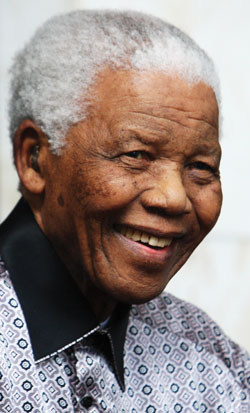The horrific events which transpired on December 14, 2012 tragically ended the lives of 26 students and faculty members of the Sandy Hook Elementary School in Newtown, Connecticut. These heroes were indiscriminately shot by a lone gunman, armed with several semi-automatic handguns and rifles, while they innocently went about their daily business. Words fail to convey how deeply America as whole was affected by this senseless violence, or how heinous this act was.
This piece is a simple exercise in political discourse. It does not have as, its intent, to diminish the significance of the Newtown Shooting in any way, nor does it seek to defend its perpetrator.
Nearly two months subsequent of the Newtown shooting, President Obama has enacted 23 executive orders which begin to address specific enforcement and implementation practices within the Executive Branch with regard to regulating the issue of gun permits, to implementing more stringent background checks on gun owners, and to beginning a national dialogue to increase public awareness of mental health issues and neurological differences.
In addition to these orders, the President has also asked the Congress to consider legislation, which would ban military-style weapons similar to the weapon used in the Newtown shooting, as well as enacting laws limiting magazine capacities to ten rounds. These orders and proposals raise questions as to the validity of the President’s executive actions as well as the application of the Second Amendment in the 21st Century.
The Second Amendment states that “…the right of the people to keep and bear Arms, shall not be infringed.” In spite of their brilliance, it is doubtful that the founders could have stated this provision any more clearly; Americans have a constitutional right to own weapons. However, does the context of the “arms” of 1791, the year in which the Second Amendment was ratified, still apply to the “arms” of today? In 1791, it would have been impossible for even the founders to have considered any weaponry more powerful than the black powder muskets of their era. Although very dangerous in the hands of a skilled marksman, the weapons of 1791 were still only capable of firing a single round before needing to be reloaded; a far cry from the rifle used in the Newtown shooting, which was capable of firing 45 rounds per minute, and, according to CBS News, each of the Newtown victims had been shot more than once. These weapons, however, are legal under the application of the rather ambiguous term “arms” in the Constitution despite the impossibility of the founders to have considered the prospect of a single weapon having the capability to cause so many casualties.
The President’s executive orders included directives to departments such as the Bureau of Alcohol, Tobacco and Firearms (ATF) to provide gun dealers with guidelines as to how to perform more stringent background checks on gun permit applicants. Despite major criticisms of these directives, strictly speaking, the President, as the nation’s chief executive, is completely within his powers to regulate the operations of executive-branch departments such as the ATF.
However, questions must be raised with regard to the specific nature of background checks as well as the criteria established to determine whether a given applicant would be approved or denied. Although the President stated that his directives would function within existing laws, it is important to stress that any changes to permit-issuance standards would need to be enacted by either individual state legislatures.
Congressional action as to the restriction of military-style weapons is not unprecedented, as demonstrated by the Assault-Weapons Ban in place from 1994 to 2004. This law, however, had many loopholes and ambiguities which allowed many banned weapons to be modified, sometimes in only small manners, which would then return them to legal status. Due to the vagueness of the constitutional definition of arms, any future actions taken to restrict either certain types of weapons or firearms altogether, will be the subject of vehement debate and may even inspire calls for a constitution amendment.
Finally, the state of mental health awareness and the availability of resources for the mentally ill in America are extremely poor. Although it may never be confirmed, there is much speculation that the Newtown shooter suffered from mental illness or may have exhibited neurological symptoms consistent with Autism. With regard to the right to bear arms, this right is afforded to all citizens of the United States, as are the rights to life, liberty, and to pursue happiness, which are acknowledged as the inalienable rights of man. Extreme care must be taken when deciding whether those with mental illness or neurological differences are fit to exercise their right to bear arms.
Senior fine arts major Leanna Soden interjects, “Simply because a person has a mental handicap or illness does not necessarily mean that he or she is unfit to own firearms.” Although the welfare of the majority must take precedence, it is important to remember that those who suffer from mental illness or neurological differences had no choice in this matter and their rights warrant the same protection as those of all others.
As the horrific events in Newtown reminded everyone, America is far from perfect. Whichever steps are eventually taken to improve public safety, it is important, above all else, to respect the rights and dignity of all people and to respect and to properly implement the governing and legislative processes defined in the Constitution. The ultimate genius of America is that, as times change and issues come and go, American society consistently rises to the occasion and, through every challenge cast before it, emerges stronger, more united, and still, free.



